The Ultimate Guide to Backpacking in Southeast Asia
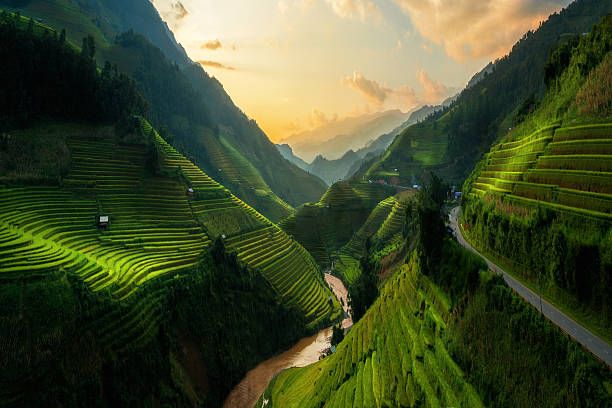
Backpacking in Southeast Asia is an adventure like no other. With its stunning landscapes, vibrant culture, and friendly locals, it's no wonder that Southeast Asia has become a popular destination for backpackers from all over the world.
However, planning a backpacking trip to Southeast Asia can be overwhelming, especially if it's your first time. In this article, we'll provide you with the ultimate guide to backpacking in Southeast Asia, including the best places to visit, how to budget, what to pack, and more.
Southeast Asia is a region full of incredible places to visit, from bustling cities to stunning beaches to ancient temples. Here are some of the best places to visit in Southeast Asia:
Bangkok, Thailand
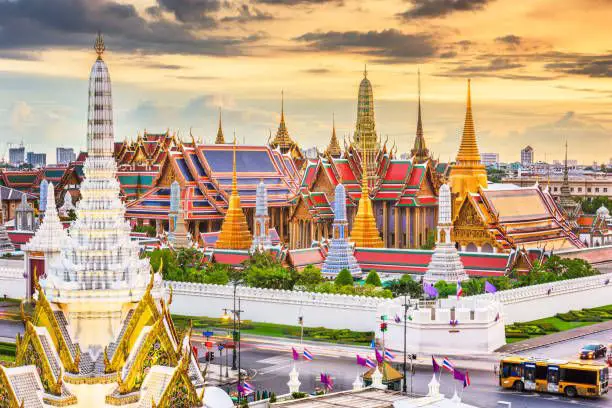
Bangkok is the capital city of Thailand and one of the most popular destinations in Southeast Asia. The city is known for its vibrant street life, delicious food, and beautiful temples. Here's a guide to exploring Bangkok:
Things to Do
- Visit the Grand Palace: The Grand Palace is a stunning complex of buildings that was once the residence of the Thai royal family. It's home to the famous Temple of the Emerald Buddha, which is one of the most sacred temples in Thailand.
- Explore the Temples: Bangkok is home to hundreds of beautiful temples, including Wat Phra Kaew, Wat Arun, and Wat Pho. Each temple has its own unique architecture and history.
- Shop at Chatuchak Weekend Market: Chatuchak Weekend Market is one of the largest markets in the world, with over 8,000 stalls selling everything from clothing to souvenirs. It's open on weekends and is a must-visit for any shopping enthusiast.
- Take a Boat Ride on the Chao Phraya River: The Chao Phraya River runs through the heart of Bangkok and is a great way to see the city from a different perspective. You can take a boat ride along the river and visit some of the temples and markets along the way.
- Visit Khao San Road: Khao San Road is a popular destination for backpackers and is known for its lively atmosphere, street food, and cheap accommodation.
Food
Bangkok is known for its delicious street food, which is a must-try for any visitor. Some popular dishes include:
- Pad Thai: Stir-fried rice noodles with vegetables, eggs, and meat or seafood.
- Tom Yum Soup: A spicy and sour soup made with shrimp, lemongrass, and chili.
- Green Curry: A spicy curry made with coconut milk, green chili, and chicken or beef.
- Mango Sticky Rice: A sweet dessert made with sticky rice, fresh mango, and coconut milk.
Accommodation
Bangkok has a range of accommodation options to suit every budget. Hostels and guesthouses are popular among backpackers and can cost as little as $5-10 USD per night. There are also many mid-range and luxury hotels available, with prices ranging from $50-200 USD per night.
Transportation
Bangkok has a comprehensive public transportation system, including the BTS Skytrain, MRT Subway, and buses. Taxis and tuk-tuks are also available, but be aware of scams and negotiate the price before you get in.
Safety
Bangkok is generally a safe city, but it's important to take precautions. Keep an eye on your belongings, especially in crowded areas. Be aware of scams and avoid carrying large amounts of cash. It's also a good idea to research any potential health risks and get necessary vaccinations before you go.
When to Visit
The best time to visit Bangkok is during the dry season, which runs from November to February. The weather is cooler and less humid during this time, making it more comfortable for sightseeing. March to May can be hot and humid, while the rainy season runs from June to October.
Bangkok is a vibrant and exciting city that's well worth a visit for any traveler to Southeast Asia. With its beautiful temples, delicious food, and lively street life, it's sure to leave a lasting impression on any visitor.
Bali, Indonesia
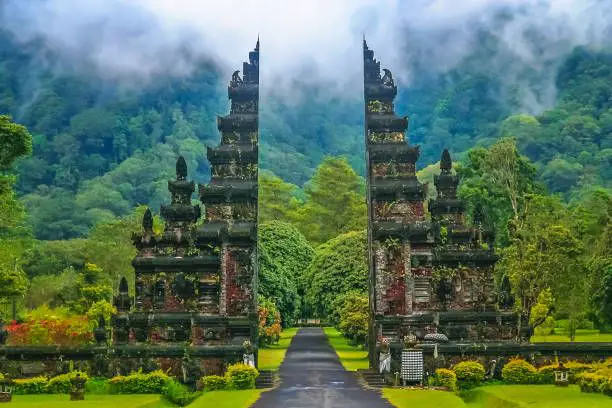
Bali is an Indonesian island located in the westernmost end of the Lesser Sunda Islands, lying between Java to the west and Lombok to the east. Bali is known for its stunning beaches, picturesque rice terraces, vibrant culture, and friendly people. Here's a guide to exploring Bali:
Things to Do
1. Visit the temples: Bali is known as the Island of the Gods and is home to thousands of temples. Some of the most famous temples include Tanah Lot, Uluwatu, and Besakih.
2. Explore Ubud: Ubud is a cultural and artistic hub in Bali, known for its beautiful rice terraces, art galleries, and traditional crafts. You can visit the Sacred Monkey Forest, explore the local markets, or take a yoga class.
3. Surfing and Water Sports: Bali is a world-renowned destination for surfing and other water sports. Some popular beaches for surfing include Kuta, Uluwatu, and Canggu.
4. Visit the Rice Terraces: Bali is home to some of the most beautiful rice terraces in the world, including Tegalalang, Jatiluwih, and Ubud.
5. Enjoy the Beaches: Bali has some of the most beautiful beaches in the world, including Nusa Dua, Jimbaran, and Seminyak.
Food
Bali is known for its delicious food, which is a mix of Indonesian and Balinese cuisine. Some popular dishes include:
- Nasi Goreng: Fried rice with vegetables, meat, and a fried egg on top.
- Babi Guling: Spit-roasted pig with crispy skin, served with rice and vegetables.
- Satay: Skewered and grilled meat, usually served with a peanut sauce.
- Nasi Campur: A rice dish served with small portions of different meats, vegetables, and sambals.
- Balinese Coffee: Balinese coffee is famous for its rich, full-bodied flavor.
Accommodation
Bali has a wide range of accommodation options to suit every budget. There are luxury resorts, villas, and hotels, as well as budget guesthouses and homestays. Some popular areas to stay in Bali include Ubud, Kuta, and Seminyak.
Transportation
Bali has a range of transportation options, including taxis, motorbikes, and private drivers. Renting a motorbike is a popular option for exploring the island, but be sure to wear a helmet and drive safely. Taxis are also widely available, but make sure to negotiate the price before you get in.
Safety
Bali is generally a safe destination, but there are some things to be aware of. Petty theft and pickpocketing can occur, especially in crowded areas. Be cautious when renting motorbikes, and only rent from reputable companies. Be aware of potential scams, such as fake tour companies or ticket sellers.
When to Visit
The best time to visit Bali is during the dry season, which runs from April to October. The weather is cooler and less humid during this time, making it more comfortable for sightseeing. November to March is the rainy season, and while it can still be a great time to visit, be prepared for more rain and potential flooding.
Bali is a beautiful island that's well worth a visit for any traveler to Southeast Asia. With its stunning beaches, vibrant culture, and delicious food, it's sure to leave a lasting impression on any visitor. Whether you're looking for adventure or relaxation, Bali has something to offer everyone.
Ho Chi Minh City, Vietnam
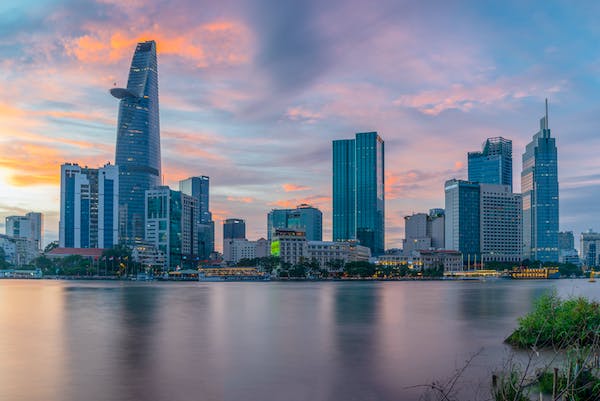
Ho Chi Minh City, formerly known as Saigon, is the largest city in Vietnam and a bustling metropolis that attracts visitors from all over the world. Here's a guide to exploring Ho Chi Minh City:
Things to Do
- Visit the War Remnants Museum: This museum provides a powerful look at the Vietnam War from the perspective of the Vietnamese people.
- Explore the Cu Chi Tunnels: This underground network of tunnels was used by the Viet Cong during the Vietnam War.
- Visit the Notre-Dame Cathedral: This beautiful cathedral was built by the French in the late 19th century and is one of the most iconic buildings in Ho Chi Minh City.
- Walk around Ben Thanh Market: This bustling market is a great place to shop for souvenirs, clothing, and food.
- Enjoy Vietnamese Cuisine: Ho Chi Minh City is known for its delicious street food, including pho, banh mi, and bun cha.
Accommodation
Ho Chi Minh City has a wide range of accommodation options to suit every budget, from luxury hotels to budget guesthouses. Popular areas to stay include District 1, which is the central business district and has plenty of accommodation options, and Pham Ngu Lao, which is a popular backpacker area.
Transportation
Ho Chi Minh City has a range of transportation options, including taxis, motorbikes, and public transport. Taxis are widely available, but be sure to negotiate the price before you get in.
Motorbikes are a popular way to get around, but be aware of the traffic and drive safely. Public transport includes buses and a metro system that is currently under construction.
Safety
Ho Chi Minh City is generally a safe destination, but there are some things to be aware of. Petty theft and pickpocketing can occur, especially in crowded areas. Be cautious when crossing the street, as the traffic can be chaotic. Avoid drinking tap water and be careful when eating street food to avoid getting sick.
When to Visit
The best time to visit Ho Chi Minh City is during the dry season, which runs from December to April. The weather is cooler and less humid during this time, making it more comfortable for sightseeing.
May to November is the rainy season, and while it can still be a great time to visit, be prepared for more rain and potential flooding.
Ho Chi Minh City is a fascinating city that offers a glimpse into Vietnam's past and present. With its rich history, delicious food, and friendly people, it's sure to leave a lasting impression on any visitor.
Whether you're interested in history, culture, or just exploring a new city, Ho Chi Minh City is a great destination to add to your Southeast Asia itinerary.
Luang Prabang, Laos
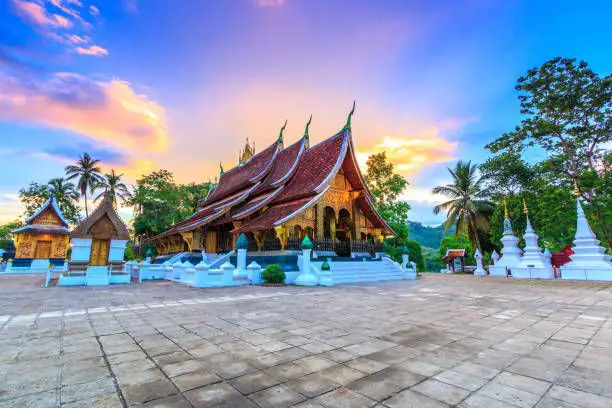
Luang Prabang is a charming city in northern Laos that is known for its beautiful temples, stunning natural scenery, and laid-back atmosphere. Here's a guide to exploring Luang Prabang:
Things to Do
- Visit the Royal Palace Museum: This museum is housed in the former Royal Palace and provides a look into the history of the Laos monarchy.
- Explore the Buddhist temples: Luang Prabang is home to many beautiful temples, including Wat Xieng Thong, Wat Mai, and Wat Visounnarath.
- Take a boat trip on the Mekong River: A boat trip is a great way to see the natural beauty of the area and visit nearby villages.
- Visit the Kuang Si Waterfalls: These beautiful waterfalls are located just outside of Luang Prabang and are a popular attraction.
- Learn about traditional Lao culture at the Traditional Arts and Ethnology Centre: This museum provides a look into the traditional culture and lifestyles of the ethnic groups in Laos.
Accommodation
Luang Prabang has a range of accommodation options to suit every budget, from luxury hotels to budget guesthouses. Popular areas to stay include the historic center, where many of the temples are located, and the Nam Khan River area, which has a more relaxed atmosphere.
Transportation
Luang Prabang is a small city that is easy to navigate on foot or by bicycle. Tuk-tuks and taxis are also available for longer trips, and boats can be rented for trips on the Mekong River.
Safety
Luang Prabang is generally a safe destination, but be aware of petty theft and pickpocketing, especially in crowded areas. Be cautious when renting motorbikes, as accidents can occur due to the winding roads and steep hills.
When to Visit
The best time to visit Luang Prabang is during the dry season, which runs from November to April. The weather is cooler and less humid during this time, making it more comfortable for sightseeing.
May to October is the rainy season, and while it can still be a great time to visit, be prepared for more rain and potential flooding.
Luang Prabang is a beautiful and peaceful destination that offers a glimpse into traditional Lao culture and stunning natural beauty.
With its charming temples, beautiful waterfalls, and relaxed atmosphere, it's a great destination for anyone looking to slow down and enjoy a more laid-back travel experience in Southeast Asia.
Siem Reap, Cambodia
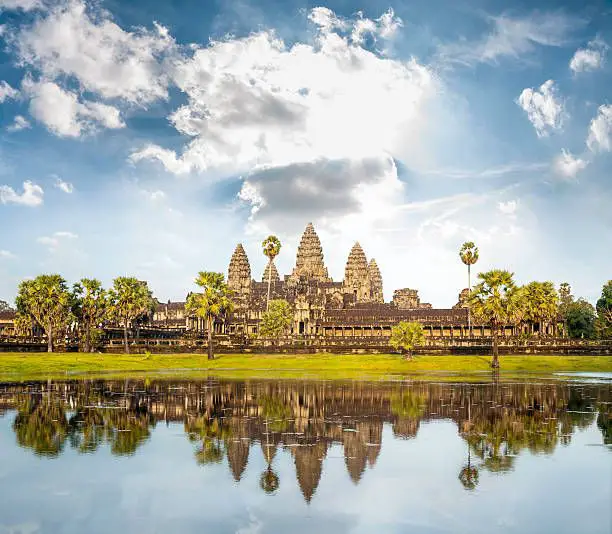
Siem Reap is a popular destination in Cambodia known for its ancient temples, rich history, and vibrant culture. Here's a guide to exploring Siem Reap:
Things to Do
- Visit Angkor Wat: This ancient temple complex is one of the most famous landmarks in Southeast Asia and a must-visit for anyone traveling to Siem Reap.
- Explore the Angkor Archaeological Park: This park is home to many ancient temples, including the Bayon, Ta Prohm, and Banteay Srei.
- Visit the Landmine Museum and Relief Center: This museum provides a look into the landmine problem in Cambodia and the efforts to clear them.
- Take a boat tour on Tonle Sap Lake: This lake is the largest in Southeast Asia and is home to many floating villages and unique ecosystems.
- Visit the Old Market and Night Market: These markets are great places to shop for souvenirs, clothing, and local crafts.
Accommodation
Siem Reap has a range of accommodation options to suit every budget, from luxury hotels to budget guesthouses. Popular areas to stay include the town center, where many of the restaurants and bars are located, and the area around Angkor Wat.
Transportation
Siem Reap is a small city that is easy to navigate on foot or by bicycle. Tuk-tuks and taxis are also available for longer trips, and motorbikes can be rented for exploring further afield.
Safety
Siem Reap is generally a safe destination, but be aware of petty theft and pickpocketing, especially in crowded areas. Be cautious when renting motorbikes, as accidents can occur due to the poor road conditions and traffic.
When to Visit
The best time to visit Siem Reap is during the dry season, which runs from November to April. The weather is cooler and less humid during this time, making it more comfortable for sightseeing.
May to October is the rainy season, and while it can still be a great time to visit, be prepared for more rain and potential flooding.
Siem Reap is a fascinating and beautiful destination that offers a glimpse into Cambodia's rich history and culture.
With its ancient temples, beautiful landscapes, and vibrant markets, it's a great destination for anyone looking to experience the unique sights and sounds of Southeast Asia.
Hoi An, Vietnam
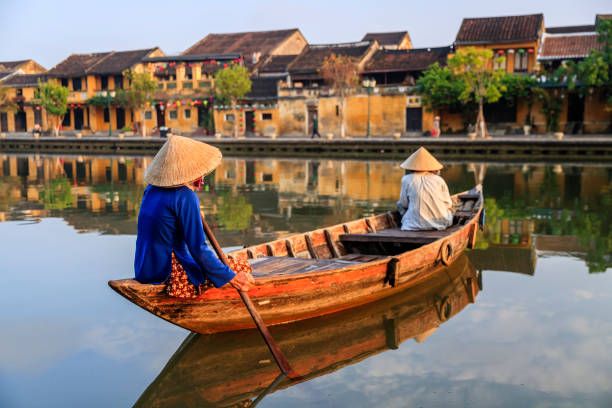
Hoi An is a charming coastal town in central Vietnam that is known for its ancient architecture, colorful lanterns, and delicious food. Here's a guide to exploring Hoi An:
Things to Do
- Explore the Old Town: Hoi An's Old Town is a UNESCO World Heritage site that is filled with ancient buildings, temples, and colorful lanterns.
- Visit the Japanese Covered Bridge: This iconic bridge is a symbol of Hoi An and was built in the 16th century to connect the Japanese and Chinese communities in the town.
- Take a cooking class: Hoi An is known for its delicious cuisine, and taking a cooking class is a great way to learn about the local ingredients and cooking techniques.
- Visit the beaches: Hoi An is located on the coast and has several beautiful beaches, including An Bang Beach and Cua Dai Beach.
- Explore the countryside: Rent a bike or take a guided tour to explore the rice paddies, fishing villages, and rural landscapes surrounding Hoi An.
Accommodation
Hoi An has a range of accommodation options to suit every budget, from luxury resorts to budget guesthouses. Popular areas to stay include the Old Town, where many of the historic buildings and temples are located, and the beach areas.
Transportation
Hoi An is a small town that is easy to navigate on foot or by bicycle. Taxis and motorbike taxis are also available for longer trips, and motorbikes can be rented for exploring further afield.
Safety
Hoi An is generally a safe destination, but be aware of petty theft and pickpocketing, especially in crowded areas. Be cautious when renting motorbikes, as accidents can occur due to the traffic and poor road conditions.
When to Visit
The best time to visit Hoi An is from February to May when the weather is dry and the temperatures are mild. June to August can be hot and humid, and September to January is the rainy season.
Hoi An is a beautiful and charming destination that offers a glimpse into Vietnam's rich history and culture. With its ancient architecture, colorful lanterns, delicious food, and beautiful beaches, it's a great destination for anyone looking to experience the unique sights and sounds of Vietnam.
Chiang Mai, Thailand
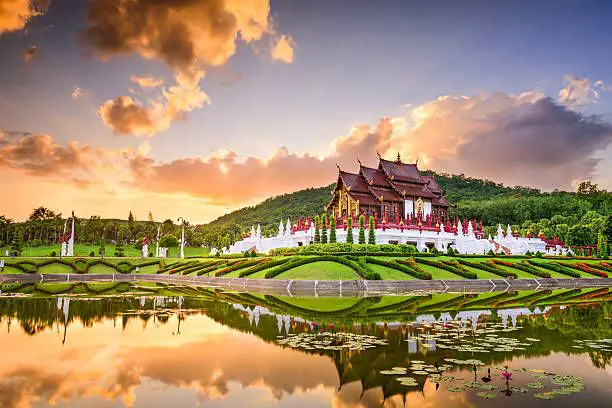
Chiang Mai is a vibrant and culturally rich city in northern Thailand known for its ancient temples, delicious food, and stunning natural landscapes. Here's a guide to exploring Chiang Mai:
Things to Do
- Visit the ancient temples: Chiang Mai is home to over 300 temples, including the famous Wat Phra That Doi Suthep, which is located on a hill overlooking the city.
- Explore the Night Bazaar: This lively market is a great place to shop for souvenirs, clothing, and local crafts.
- Take a cooking class: Chiang Mai is known for its delicious cuisine, and taking a cooking class is a great way to learn about the local ingredients and cooking techniques.
- Visit the Elephant Nature Park: This sanctuary is home to rescued elephants and offers a unique opportunity to interact with these majestic creatures.
- Explore the natural landscapes: Chiang Mai is surrounded by stunning natural landscapes, including national parks, waterfalls, and rice paddies.
Accommodation
Chiang Mai has a range of accommodation options to suit every budget, from luxury hotels to budget guesthouses. Popular areas to stay include the Old City, where many of the historic temples and buildings are located, and the Nimmanhaemin Road area, which is known for its trendy cafes and boutiques.
Transportation
Chiang Mai is a relatively small city that is easy to navigate on foot or by bicycle. Tuk-tuks and songthaews (shared taxis) are also available for longer trips, and motorbikes can be rented for exploring further afield.
Safety
Chiang Mai is generally a safe destination, but be aware of petty theft and pickpocketing, especially in crowded areas. Be cautious when renting motorbikes, as accidents can occur due to the traffic and poor road conditions.
When to Visit
The best time to visit Chiang Mai is from November to February when the weather is cool and dry. March to May can be hot and humid, and June to October is the rainy season.
Chiang Mai is a fascinating and beautiful destination that offers a glimpse into Thailand's rich history and culture. With its ancient temples, delicious food, and stunning natural landscapes, it's a great destination for anyone looking to experience the unique sights and sounds of Southeast Asia.
Boracay, Philippines
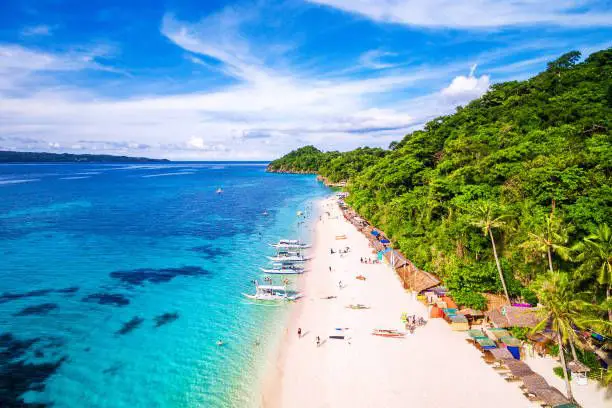
Boracay is a small island in the central Philippines known for its beautiful beaches, crystal clear waters, and vibrant nightlife. Here's a guide to exploring Boracay:
Things to Do
- Relax on the beaches: Boracay is home to several beautiful beaches, including White Beach, which is known for its fine white sand and clear blue waters.
- Go island hopping: Take a boat tour to explore the nearby islands and beaches, including Puka Beach and Crocodile Island.
- Try water sports: Boracay is a popular destination for water sports, including snorkeling, diving, kiteboarding, and parasailing.
- Visit the bat caves: Take a guided tour to explore the bat caves and see the thousands of bats that call them home.
- Experience the nightlife: Boracay has a vibrant nightlife scene, with a variety of bars, clubs, and restaurants to choose from.
Accommodation
Boracay has a range of accommodation options to suit every budget, from luxury resorts to budget guesthouses. Popular areas to stay include White Beach, where many of the hotels and restaurants are located, and Bulabog Beach, which is known for its kiteboarding and windsurfing.
Transportation
Boracay is a small island that is easy to explore on foot or by tricycle. Motorbikes and bicycles can also be rented for exploring further afield, and boat tours are available for island hopping.
Safety
Boracay is generally a safe destination, but be aware of petty theft and pickpocketing, especially in crowded areas. Be cautious when participating in water sports, as accidents can occur due to the strong currents and waves.
When to Visit
The best time to visit Boracay is from November to April when the weather is dry and the waters are calm. May to October is the rainy season, with occasional typhoons and heavy rains.
Boracay is a beautiful and lively destination that offers something for everyone, whether you're looking for relaxation on the beach or adventure in the water.
With its crystal clear waters, vibrant nightlife, and stunning natural landscapes, it's a must-visit destination in the Philippines.
These are just a few of the incredible places to visit in Southeast Asia. No matter where you go, you're sure to have an unforgettable experience.
Budgeting for Backpacking in Southeast Asia
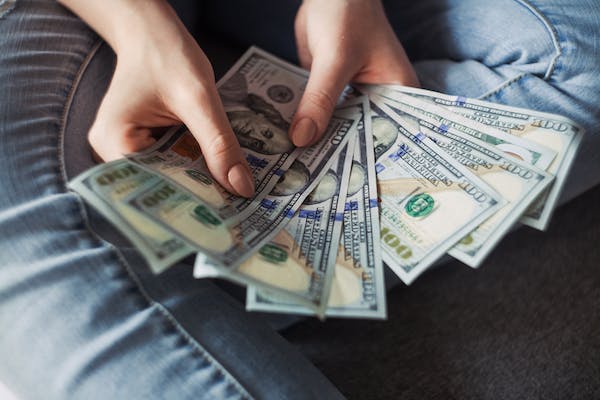
Backpacking in Southeast Asia is a great way to experience the region's incredible culture and natural beauty while keeping costs low.
However, it's important to budget carefully to ensure that you have enough money to last your entire trip. Here are some tips for budgeting for backpacking in Southeast Asia:
1. Research the cost of living in each country you plan to visit: The cost of living can vary greatly from one country to another in Southeast Asia. It's important to research the cost of accommodation, food, transportation, and activities in each country you plan to visit so that you can budget accordingly.
2. Use budget travel apps: There are many travel apps available that can help you find affordable accommodation, transportation, and activities. Hostelworld, Agoda, and Booking.com are just a few examples of apps that offer budget-friendly options.
3. Eat like a local: Eating like a local is not only a great way to save money, but it's also a great way to experience the culture of Southeast Asia. Street food is often the most affordable and delicious option, and many restaurants offer set meals that are much cheaper than ordering individual dishes.
4. Shop at local markets: Shopping at local markets is a great way to find affordable souvenirs and snacks. Be sure to haggle with vendors to get the best price.
5. Travel by public transportation: Public transportation is often much cheaper than taking taxis or private cars. Buses and trains are the most affordable options, but be prepared for longer travel times.
6. Stay in hostels: Hostels are the most affordable accommodation option for backpackers in Southeast Asia. They offer dormitory-style rooms that are shared with other travelers, but they're also a great way to meet new people.
7. Set a daily budget: Set a daily budget for yourself and stick to it. This will help you keep track of your spending and ensure that you don't run out of money before your trip is over.
By following these tips, you can budget effectively for your backpacking trip to Southeast Asia and ensure that you have a great experience without breaking the bank.
What to Pack for Backpacking in Southeast Asia
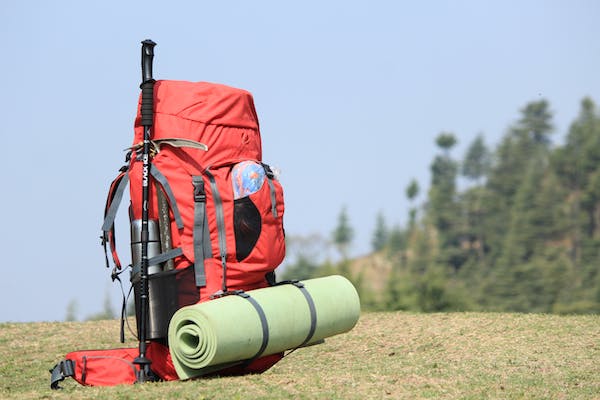
Packing for backpacking in Southeast Asia can be a challenge, as you want to make sure you have everything you need without overpacking. Here are some essential items to pack for backpacking in Southeast Asia:
1. Lightweight and breathable clothing: Southeast Asia is known for its hot and humid weather, so it's important to pack lightweight and breathable clothing. Cotton and linen are good options.
2. Comfortable shoes: Comfortable shoes are a must for backpacking, as you'll likely be doing a lot of walking. Sneakers or sturdy sandals are good options.
3. Sunscreen and insect repellent: Sunscreen and insect repellent are essential for protecting your skin from the sun and mosquitoes.
4. Travel towel: A travel towel is lightweight and quick-drying, making it ideal for backpacking. It's also useful for trips to the beach or swimming.
5. Water bottle: It's important to stay hydrated in Southeast Asia, so bring a refillable water bottle. Some countries have refill stations available, but be sure to check the water quality before drinking.
6. First aid kit: A basic first aid kit should include items like band-aids, antiseptic, and pain relievers.
7. Electronics: Don't forget to bring a camera, phone, and charger. Many hostels and cafes offer free Wi-Fi, so it's easy to stay connected.
8. Money belt: A money belt is a safe and secure way to carry your money and important documents.
9. Power bank: A power bank is useful for charging your phone or other electronic devices while on the go.
10. Backpack: A good backpack is essential for backpacking. Look for one with comfortable straps and plenty of pockets.
By packing these essential items, you'll be well-prepared for your backpacking adventure in Southeast Asia. Remember to pack light and leave room for souvenirs!
Tips for Staying Safe While Backpacking in Southeast Asia
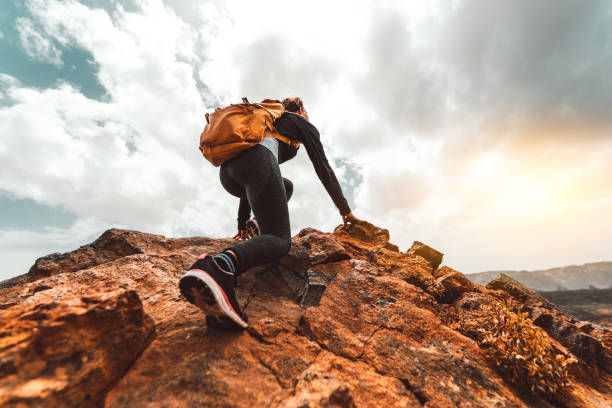
Backpacking in Southeast Asia can be an amazing experience, but it's important to take steps to stay safe while you travel. Here are some tips for staying safe while backpacking in Southeast Asia:
1. Do your research: Research your destination before you arrive, and learn about any potential safety concerns. Read travel blogs and talk to other travelers who have been to the area before.
2. Stay in safe accommodations: Choose a hostel or hotel that has good reviews and a safe location. Be wary of staying in remote areas or places that seem sketchy.
3. Protect your valuables: Keep your valuables like passports, credit cards, and cash in a secure location, like a money belt or hotel safe.
4. Be aware of your surroundings: Be aware of your surroundings at all times, especially in crowded areas. Keep an eye out for pickpockets and stay alert in unfamiliar areas.
5. Use common sense: Use common sense when making decisions while you travel. Don't walk alone at night or in unlit areas, and avoid taking shortcuts through unfamiliar areas.
6. Know the local customs: Understanding the local customs and traditions can help you stay safe while backpacking in Southeast Asia. Be respectful of local customs, especially in conservative countries.
7. Be cautious when using public transportation: Public transportation in Southeast Asia can be overcrowded and unsafe. Be careful when using buses or trains, and avoid traveling alone at night.
8. Keep a copy of important documents: Keep a copy of your passport, visa, and other important documents in case they get lost or stolen.
9. Stay healthy: Staying healthy is an important part of staying safe. Drink plenty of water, eat well, and get enough rest.
By following these tips, you can stay safe while backpacking in Southeast Asia and make the most of your travel experience. Remember to be cautious, use common sense, and have fun!
Conclusion
Backpacking in Southeast Asia can be an exciting and life-changing experience, but it's important to be prepared and stay safe while you travel.
From budgeting and packing to staying healthy and protecting your valuables, there are many things to consider before embarking on your backpacking journey.
By doing your research, choosing safe accommodations, and using common sense while you travel, you can have a memorable and safe trip to Southeast Asia. Remember to be respectful of the local customs and traditions, and take time to immerse yourself in the rich culture and beauty of the region.
Whether you're exploring ancient temples in Cambodia, relaxing on the beaches of Thailand, or hiking through the jungles of Indonesia, backpacking in Southeast Asia offers endless opportunities for adventure and discovery.
With proper planning and caution, you can have an amazing backpacking experience in this incredible part of the world.
